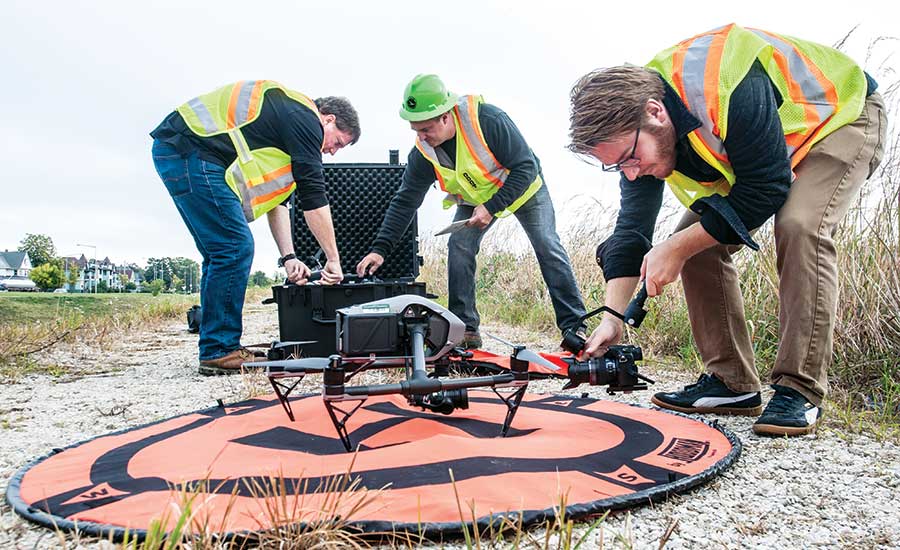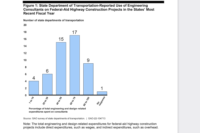More state transportation agencies are using aerial drones, and overall commercial use of the devices is expected to continue to climb, though not as dramatically as predicted in 2017, recent reports say.
Results of an American Association of State Highway and Transportation Officials study, released on March 27, show that 20 state departments of transportation have made use of unmanned aerial systems (UAS), as drones are more formally known. AASHTO said another 15 DOTs are studying how they might employ the aerial technology.
Those figures are up from the numbers state DOTs reported to AASHTO in 2016. That earlier survey showed that 17 agencies had studied or used drones and another 16 were either examining them, helping to develop drone policies or supporting research on the technology.
This year’s AASHTO drone report, based on responses from 44 state DOTs, says that all 20 agencies incorporating drones in their work use them to take photos and videos of highway construction projects.
Fourteen of the 20 say they use them for surveying, 12 for public education and outreach and 10 to inspect bridges.
In addition, eight DOTs use UASs for emergency response, six to inspect pavement, five to conduct scientific research, two to control and monitor traffic and one to inspect high-mast light poles.
Moreover, 27 state DOTs say they are adding full-time employees to run and maintain their fleets of drones.
The 20 state agencies employing UASs are Alaska, Arizona, Colorado, Delaware, Georgia, Iowa, Maine, Mississippi, Montana, Nebraska, Nevada, New Jersey, North Carolina, Ohio, Oklahoma, Oregon, Pennsylvania, Tennessee, Utah and West Virginia.
The 15 state DOTs in the drone-study phase are Alabama, Connecticut, Idaho, Illinois, Indiana, Kansas, Kentucky, Louisiana, Massachusetts, Michigan, Minnesota, New Hampshire, South Carolina, Texas, and Virginia
Bud Wright, AASHTO executive director, said in a statement, “Drones are being used to significantly cut the time it takes to gather data, which is leading to major time and cost savings.”
The Federal Aviation Administration’s latest annual aerospace forecast, released on March 15, says that the number of non-hobbyist drones—which for the most part have commercial applications—is expected to rise to at least 451,800 in 2022, a 184% increase from 2018. By comparison, in 2017, a FAA “base” forecast showed 422,000 non-hobby drones in 2021, an increase of 291% over five years.
FAA’s new “high” forecast envisions 717,895 commercial UASs in five years. Last year’s high prediction for year five was a much more bullish 1.6 million.




Post a comment to this article
Report Abusive Comment